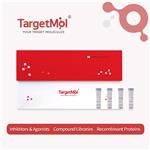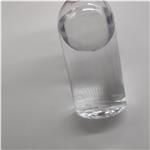3,3-Dimethyl-1-butanol (1% DMB soluble in water; p.o.; 6 weeks) significantly reduces the cardiac hypertrophy and fibrosis in heart failure (HF) mice[1].
3,3-Dimethyl-1-butanol (0.2% and 1.0% DMB soluble in water; p.o.; 21 d) increases the serum TMAO level with dose-dependent manner in ICR mice. 3,3-Dimethyl-1-butanol has been proved that the interaction between the gut and the brain has a regulatory effect on social behavior[2].
3,3-Dimethyl-1-butanol (1.0% DMB soluble in water; p.o.; gestation period and suckling period) prevents the 2,3,7,8-tetrachlorodibenzo-p-dioxin (TCDD) induced hypertension in offspring of pregnant Sprague-Dawley rats[3].
| Animal Model: | C57BL6/J male mice (8-10 weeks old) with heart failure[1]. |
| Dosage: | 1% DMB soluble in water. |
| Administration: | Oral gavage; 6 weeks. |
| Result: | Reduced the plasma trimethylamine N-oxide (TMAO) levels, the cross-sectional area of LV cardiomyocytes, and the area of LV interstitial fibrosis.
Decreased the expression of ANP, BNP, β-MHC, collagen Iα, collagen III and CTGF.
Inhibited TNF-α, IL-6, IL-1β, p65, TGF-β and Smad3 expression.
|
| Animal Model: | Male and female ICR mice (8-weeks old)[2]. |
| Dosage: | 0.2% and 1.0% DMB soluble in water. |
| Administration: | Oral gavage; 21 d. |
| Result: | Showed insignificantly effect on body weight, water intake, food intake, sexual preference, anxiety, depression and memory formation.
Weakened the social dominance of mice.
|
| Animal Model: | Pregnant Sprague-Dawley rats[3]. |
| Dosage: | 1.0% DMB soluble in water. |
| Administration: | Oral gavage; gestation period and suckling period. |
| Result: | Increased kidney weight, plasma trimethylamine (TMA) level and acetic acid, reduced diastolic.
Had significantly effect on gut microbiota composition.
|




